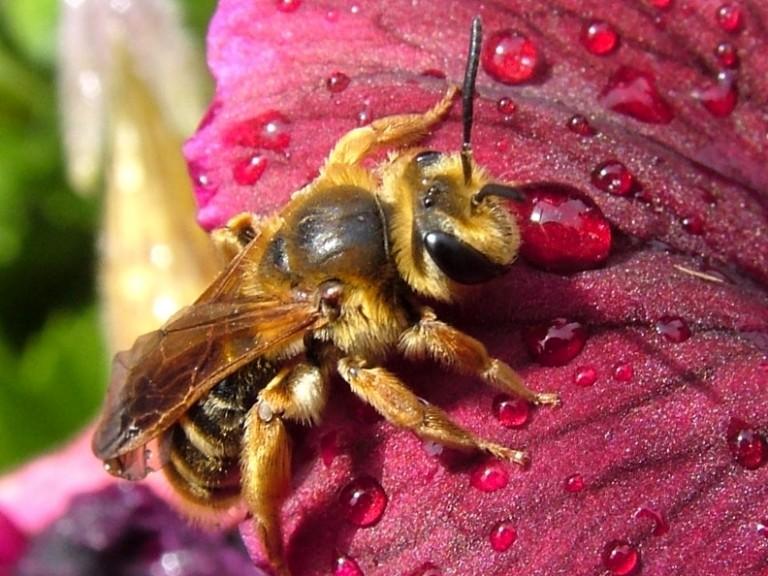Key points
- Mining, ground, or digger bees nest in burrows in the ground.
- Mining bees are solitary bees. Each mining bee female usually digs her own burrow to rear her young.
- Large numbers of these bees may nest close together if soil conditions are suitable and will fly just above the ground. When this happens they frequently become a nuisance to some people.
- They are not aggressive, seldom sting, and their flying activity lasts only 2 to 4 weeks.
- Sometimes large numbers of males will fly about the same spot for several days in a mating display.
- Bee populations can fluctuate dramatically from one season to the next.
General information
- Mining bees range in size from about the size of honey bees (largest), down to much smaller species.
- The larger bees are furry and usually darker in color than honey bees. Some are brightly striped, while others are shiny metallic green.
- Mining bee burrows tend to be located wherever there is exposed soil, thin grass, and good drainage. The holes are about 1/4 inch in diameter and are sometimes surrounded by a small mound of soil.
- Burrow structure varies according to species but often there is a vertical tunnel with smaller side tunnels that terminate in a single cell.
- The female mining bee stocks each cell with pollen and nectar she collects from flowers and then deposits an egg on the food mass.
- As eggs hatch and larvae develop they consume the stored pollen and nectar. When mature, each larva becomes a pupa (resting stage) and then becomes an adult bee.
- The adult bees overwinter below ground in the burrow site. During the next spring or early summer, the adults emerge, mate, and the females begin burrow excavation.
Management
- Mining bees are important pollinators and control should be avoided if possible.
- Heavy watering with a lawn sprinkler will discourage nesting behavior.
- Long-term control involves the elimination of bare-ground areas and the establishment of dense turf to discourage these bees.
- If the area is not conducive to a healthy lawn, groundcovers or heavy mulches may provide an alternative solution.
Rev. 2020
